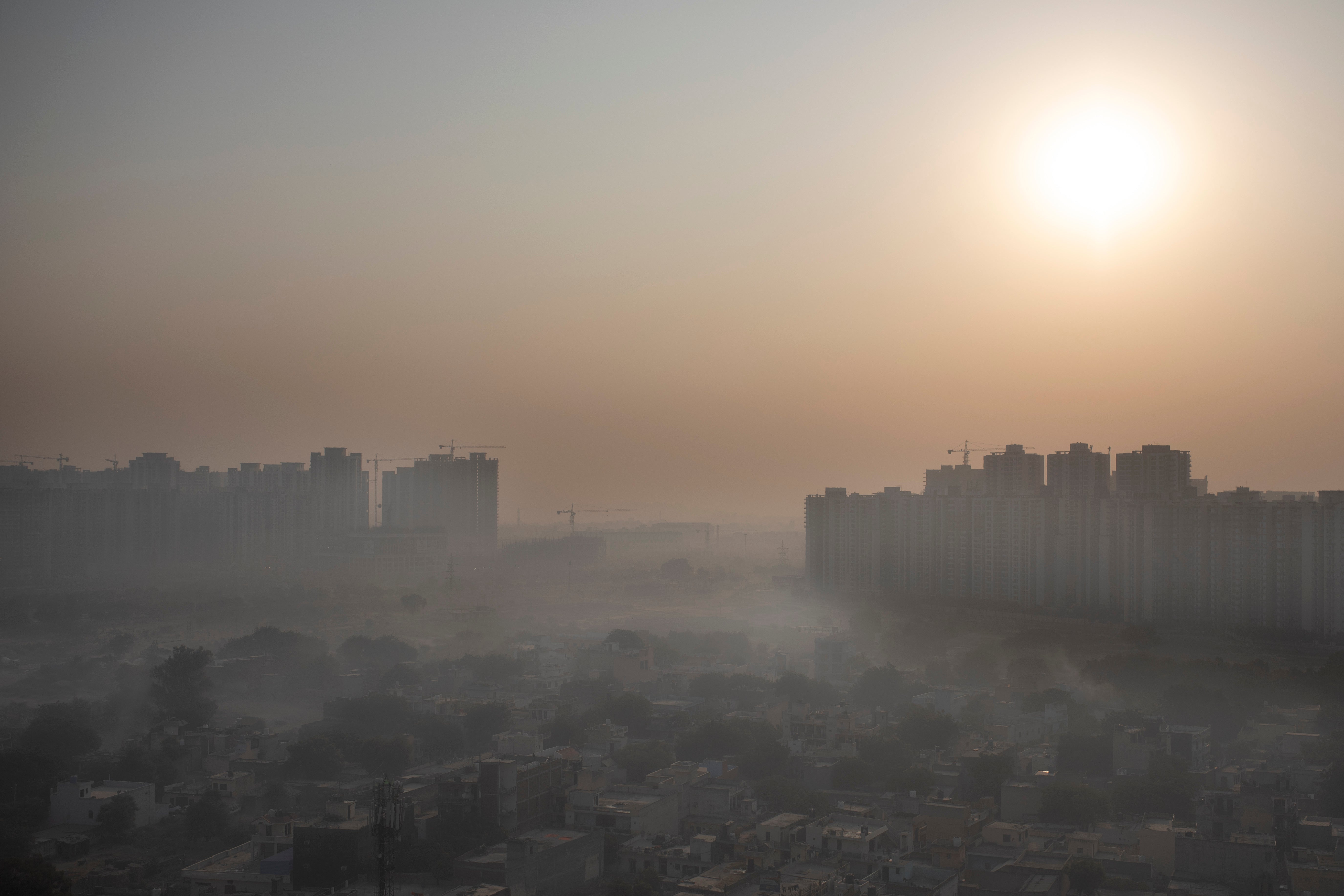Smog returns to Indian capital as agriculture fires start
Indian capital’s air quality levels have plunged to “very poor," days after the government initiated stricter measures to fight chronic air pollution

Your support helps us to tell the story
From reproductive rights to climate change to Big Tech, The Independent is on the ground when the story is developing. Whether it's investigating the financials of Elon Musk's pro-Trump PAC or producing our latest documentary, 'The A Word', which shines a light on the American women fighting for reproductive rights, we know how important it is to parse out the facts from the messaging.
At such a critical moment in US history, we need reporters on the ground. Your donation allows us to keep sending journalists to speak to both sides of the story.
The Independent is trusted by Americans across the entire political spectrum. And unlike many other quality news outlets, we choose not to lock Americans out of our reporting and analysis with paywalls. We believe quality journalism should be available to everyone, paid for by those who can afford it.
Your support makes all the difference.The Indian capital’s air quality levels plunged to “very poor” on Friday and a smoggy haze settled over the city, days after the state government initiated stricter measures to fight chronic air pollution
The Air Quality Index in New Delhi rose past 270, according to SAFAR, India’s main environment monitoring agency, after agricultural fires in neighboring states sent smoke billowing across the city. The World Health Organization deems anything above 25 as unsafe.
The national capital, one of the world’s most polluted cities, enjoyed a respite from air pollution up until September in part thanks to a virus lockdown. But with industrial activities resuming and cars back on the roads — along with the onset of cooler weather and less wind — air quality in the city has once again fallen to unhealthy levels.
October is also the time of year when farmers in neighboring regions, including the states of Haryana and Punjab, set fire to their post-harvest fields to clear them, despite there being a ban on it.
That smoke travels to New Delhi, leading to a surge in pollution levels in the city of more than 20 million people and exacerbating what is already a public health crisis.
Health experts say high air pollution levels over a prolonged period have compromised the disease resistance of people living in New Delhi, making them more susceptible to the coronavirus.
Over the years, the pollution crisis in New Delhi has piled public pressure on the government to tackle the root causes.
Authorities have often introduced a system that restricts many private vehicles from taking to the roads for two weeks. It has also ordered firefighters to sprinkle water from high-rise buildings to settle the dust, tried to snuff out garbage fires and ordered builders to cover construction sites to stop dust from enveloping the area.
But the problem continues to persist.
During peak pollution periods last year, air pollution levels in New Delhi sometimes soared even off the measurable scale. A dark yellow haze blanketed the city for several days, forcing schools to close and flights to be diverted.
The Indian Agricultural Research Institute says it has developed a microbial liquid solution that softens crop stubble and turns it into compost, thus ruling out the need to burn the agricultural crop.
The watery solution is made of four capsules that cost a little less than half a dollar and can be used for the rapid decomposition of crop residue.
K Annapurna, a senior scientist at the public institute, said the solution can help with pollution levels while at the same time retaining the essential nutrients in the soil that are otherwise damaged when the residue is burned.